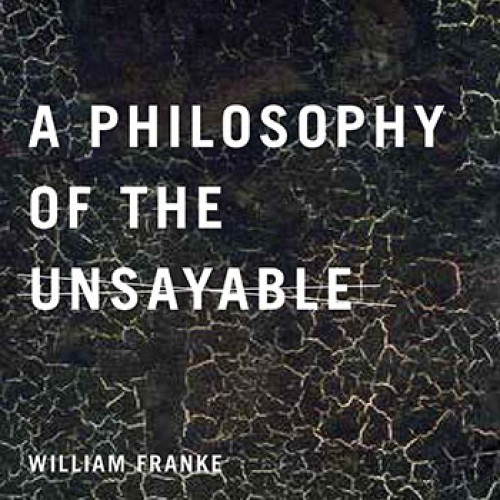 A Philosophy of the Unsayable
A Philosophy of the Unsayable
William Franke argues that the encounter with what exceeds speech has become the crucial philosophical issue of our time. He proposes an original philosophy pivoting on analysis of the limits of language. Franke engages with philosophical theologies and philosophies of religion in the debate over negative theology and shows how apophaticism infiltrates the thinking even of those who attempt to deny or delimit it.
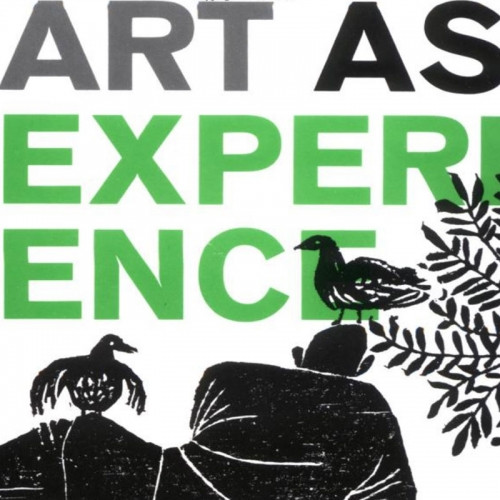 Art As Experience
Art As Experience
Based on John Dewey's lectures on esthetics, delivered as the first William James Lecturer at Harvard in 1932, Art as Experience has grown to be considered internationally as the most distinguished work ever written by an American on the formal structure and characteristic effects of all the arts: architecture, sculpture, painting, music, and literature.
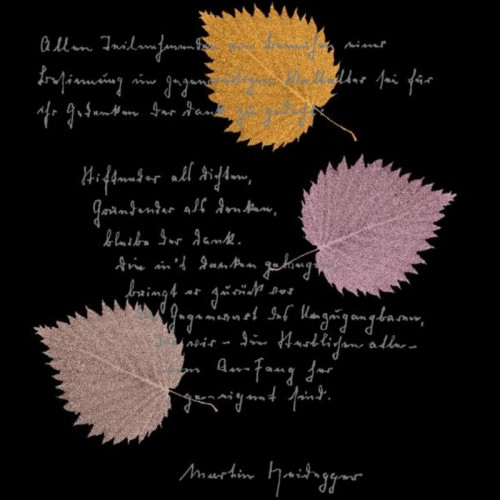 Being and Time
Being and Time
A landmark work of the twentieth century for its original analyses of the character of philosophic inquiry and the human situation. Still provocative and much disputed, Heideggers text has been taken as the inspiration for a variety of innovative movements in fields ranging from psychoanalysis, literary theory, and existentialism to ethics, hermeneutics, and theology. A work that disturbs the traditions of philosophizing that it inherits, Being and Time raises questions about the end of philosophy and the possibilities for thinking liberated from the presumptions of metaphysics.
 Benjamin for Architects
Benjamin for Architects
Walter Benjamin has become a decisive reference point for a whole range of critical disciplines, as he constructed a unique and provocative synthesis of aesthetics, politics and philosophy. Examining Benjamin's contributions to cultural criticism in relation to the works of Max Ernst, Adolf Loos, Le Corbusier and Sigfried Giedion, this book also situates Benjamin's work within more recent developments in architecture and urbanism. This is a concise, coherent account of the relevance of Walter Benjamin's writings to architects.
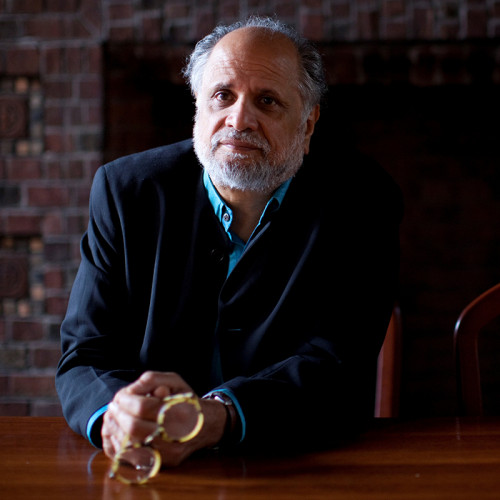 Bhabba for Architects
Bhabba for Architects
The work of Bhabha has permeated into numerous publications which use postcolonial discourse as a means to analyze architectural practices in previously colonized contexts, particularly in Africa, Asia, the Middle-East, South-East Asia and, Latin America. Bhabha's use of the concept of space has made his work highly appealing to architects. This book, specifically for architects, focuses on Bhabhas seminal book 'The Location of Culture' and reveals how his work contributes to architectural theory and the study of contemporary architectures in general.
 Bourdieu for Architects
Bourdieu for Architects
Pierre Bourdieu is arguably one of the twentieth centurys greatest socio-philosophical thinkers and his writings have much to offer anyone interested in the ways that people value, consume and produce architecture. Bourdieu spent much of his life attempting to understand cultural consumption and production through detailed empirical research that included studies of dwellings, art, museums, photography and aesthetics.
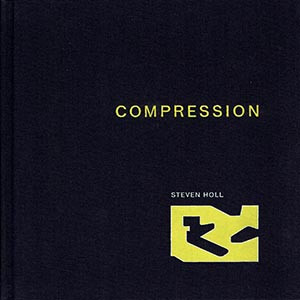 Compression
Compression
A collection of thirty-five major projects from the past decade. Holl applies concepts from neuroscience, literature, social science, and philosophy to develop the idea of compression: the condensation of material and social forces to create meaningful and sustainable architecture. All demonstrate his poetic attention to light, space, and water; a subtle and tactile employment of material and color; and an awareness of architecture's potential to connect people through inspiring public spaces.
 Deconstructing the Kimbell
Deconstructing the Kimbell
A clear-sighted look at the impact of Derrida and the deconstructionists on contemporary architecture. "A terrific piece. It is a pleasure to read, very perceptive, lucid, and well argued."--Kenneth Frampton
 Deleuze and Guattari for Architects
Deleuze and Guattari for Architects
The work of Gilles Deleuze and Felix Guattari has been inspirational for architects and architectural theorists in recent years. It is regularly cited by avant-gardist architects, but usually without being well understood. Deleuze and Guattari promote creativity and innovation, and their work is wide-ranging, complex and endlessly stimulating. They range across politics, psychoanalysis, physics, art and literature, changing preconceptions along the way.
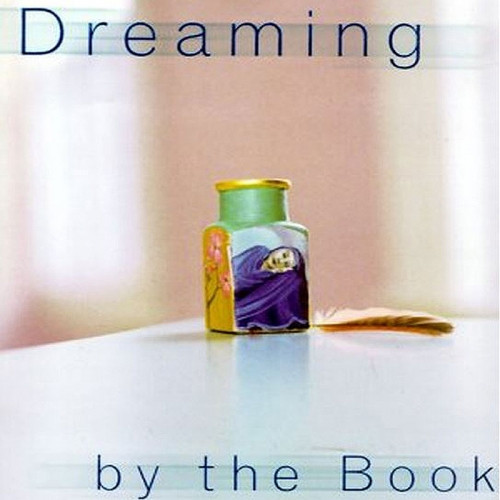 Dreaming by the Book
Dreaming by the Book
An inquiry about the way literature teaches us to use our imagination. We often attribute to our imaginative life powers that go beyond ordinary perception or sensation. Scarry explores the apparently miraculous but in fact understandable processes by which poets and writers confer those powers on us: how they teach us the work of imaginative creation. Just as painters understand paint, composers musical sounds, and sculptors stone or metal, verbal artists understand and deploy the only material in which their creations will get made - human imagination.
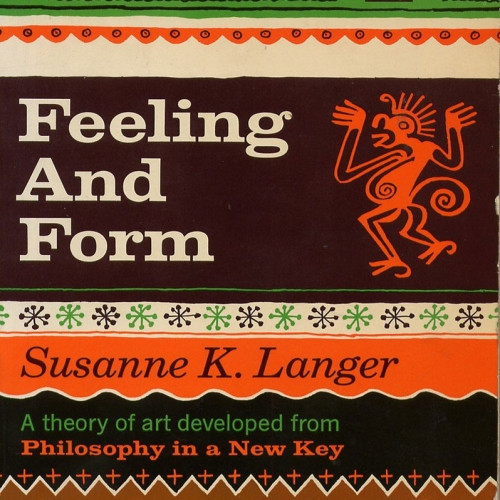 Feeling and Form
Feeling and Form
In Feeling and Form Susanne Langer developed a theory of symbolism developed to embrace all the arts. It offers nothing less than a systematic, comprehensive theory of art, applied in turn to painting, sculpture, architecture, literature, music, the dance, drama, and film.
Although the book stands alone, it builds on a foundation Langer laid earlier in her career with 'Philosophy in a New Key'.
 Foucalt for Architects
Foucalt for Architects
Michel Foucault has had a significant impact on diverse aspects of culture, knowledge and arts including architecture and its critical discourse. The implications for architecture have been wide-ranging. His archaeological and genealogical approaches to knowledge have transformed architectural history and theory. Foucaults crucial juxtaposition of space, knowledge and power has unlocked novel spatial possibilities for thinking about design in architecture and urbanism.
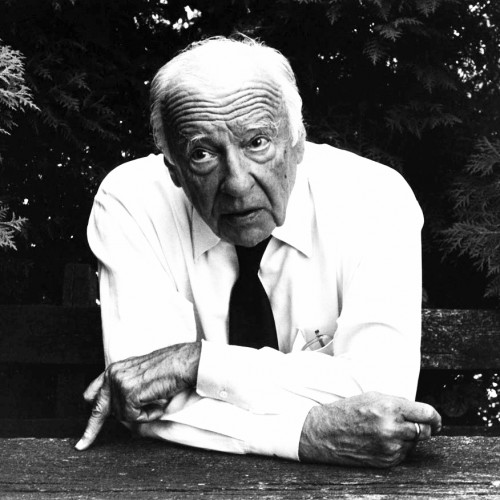 Gadamer for Architects
Gadamer for Architects
Gadamers philosophy of art gives a special place to the activity of "play" as it occurs in artistic creation. His theory of interpretation, or "philosophical hermeneutics," offers ways to understand the influence of the past upon the present and to appropriate cultural history in ever new forms. Gadamers thought opens possibilities for understanding how building today can be rich with human meaning, relating to architectures history in ways that do not merely repeat nor repudiate that history.
 Imagining: A Phenomenological Study
Imagining: A Phenomenological Study
Casey shows imagining to be eidetically distinct from perceiving and defines it as a radically autonomous act, involving a characteristic freedom of mind. "Deliberately and consistently phenomenological, oriented throughout to the basically intentional character of experience and disciplined by the requirement of proceeding by way of concrete description.... [Imagining] is an exceptionally well-written work." International Philosophical Quarterly
 Irigaray for Architects
Irigaray for Architects
Irigarays theory of sexed subjects is explained in order to show how sexuality informs the different ways in which men and women construct and inhabit architecture. In addition, her ideas about architectural forms of organization between people, exterior and interior spaces, touch and vision, philosophy and psychoanalysis are explored. The book suggests ways these strategies can enable architects to create architecture for the user and his or her physical and psychological needs.
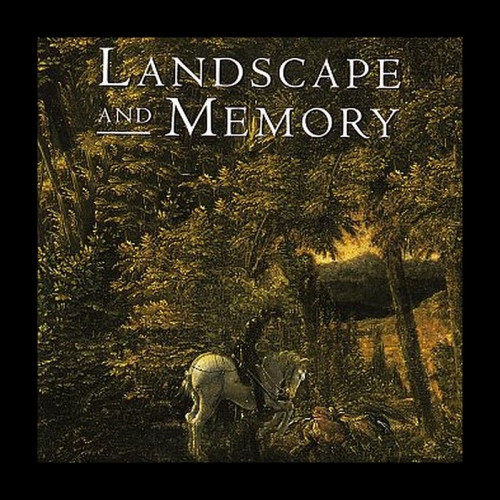 Landscape and Memory
Landscape and Memory
Schama ranges over continents and centuries to reveal psychic claims that human beings have made on nature. He tells of the Nazi cult of the primeval German forest; the play of Christian and pagan myth in Bernini's Fountain of the Four Rivers; and the duel between a monumental sculptor and a feminist gadfly on the slopes of Mount Rushmore. The result is a work of history, naturalism, mythology, and art.
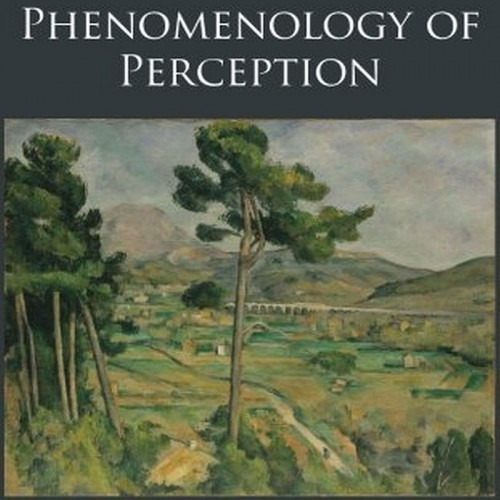 Phenomenology of Perception
Phenomenology of Perception
Phenomenology of Perception stands in the great phenomenological tradition of Husserl, Heidegger, and Sartre. Charting a course between the reductionism of science on the one hand and "intellectualism" on the other, Merleau-Ponty argues that we should regard the body not as a mere biological or physical unit, but as the body which structures ones situation and experience within the world.
 Philosophy in a New Key
Philosophy in a New Key
This book presents a study of human intelligence beginning with a semantic theory and leading into a critique of music. By implication it sets up a theory of all the arts; the transference of its basic concepts to other arts than music is not developed, but it is sketched, mainly in the chapter on artistic import. The far-reaching implications of this concept constitutes what Langer has called "philosophy in a new key."
 Philosophy of Perception
Philosophy of Perception
The philosophy of perception investigates the nature of our sensory experiences and their relation to reality. While providing historical background to debates in the field, this overview focuses on recent presentations and defenses of the different theories, and looks beyond visual perception to take into account the role of other senses.
 Poetry, Language, Thought
Poetry, Language, Thought
Poetry, Language, Thought collects Martin Heidegger's pivotal writings on art, its role in human life and culture, and its relationship to thinking and truth. This book opens up appreciation of Heidegger beyond the study of philosophy to the reaches of poetry and our fundamental relationship to the world.
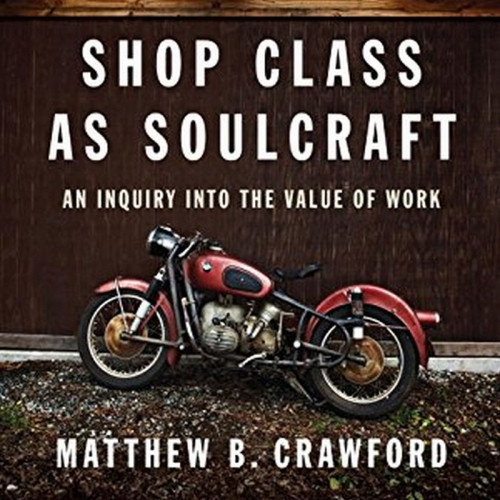 Shop Class as Soulcraft
Shop Class as Soulcraft
On both economic and psychological grounds, Crawford questions the educational imperative of turning everyone into a "knowledge worker," based on a separation of thinking from doing, the work of the hand from that of the mind. He shows how such a partition, which began a century ago with the assembly line, degrades work for those on both sides of the divide. Shop Class as Soulcraft offers a call for self-reliance and a reflection on how we can live concretely in an ever more abstract world.
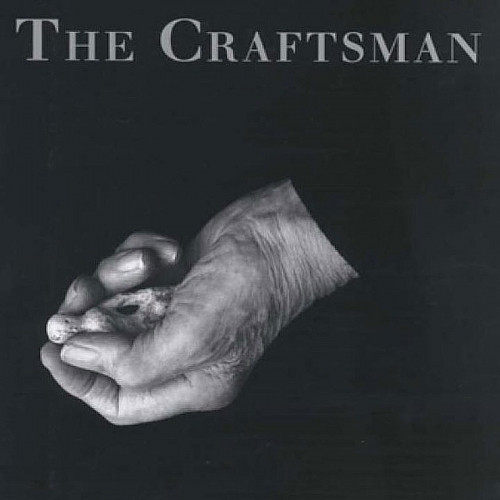 The Craftsman
The Craftsman
Craftsmanship, says Richard Sennett, names the basic human impulse to do a job well for its own sake, and good craftsmanship involves developing skills and focusing on the work rather than ourselves. Unique in the scope of his thinking, Sennett expands previous notions of crafts and craftsmen and apprises us of the surprising extent to which we can learn about ourselves through the labor of making physical things.
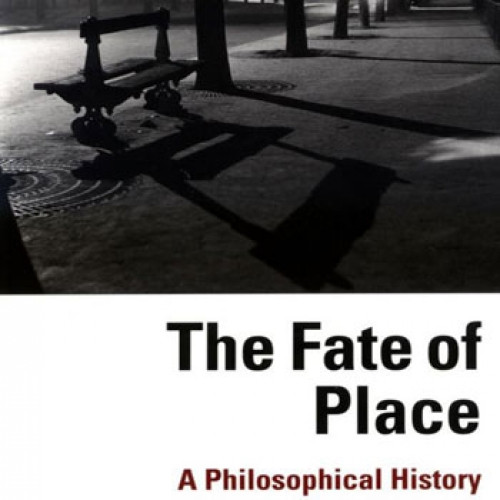 The Fate of Place
The Fate of Place
Casey explores evolving conceptualizations of place and space in Western thought. He is sensitive to silences, absences, and missed opportunities in philosophical approaches to space and place, and an increasing neglect of place in favor of space. Casey presents a history of spatial conceptions of Newton, Descartes, Leibniz, and Kant and the evolution of phenomenological approaches of Husserl, Merleau-Ponty, Bachelard, and Heidegger. He concludes with postmodern theories of Foucault, Derrida, Tschumi, Deleuze and Guattari, and Irigaray.
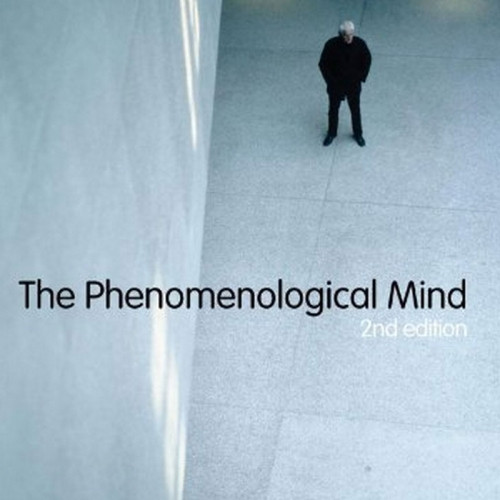 The Phenomenological Mind
The Phenomenological Mind
The Phenomenological mind shows the relevance of phenomenology to contemporary investigations of the mind and brain.
'This is an absolutely indispensable book for anyone interested in the contemporary study of the mind. It is a fresh, lively and highly accessible text... In short, a superb and much needed book.' - Barry C. Smith, Institute of Philosophy, University of London
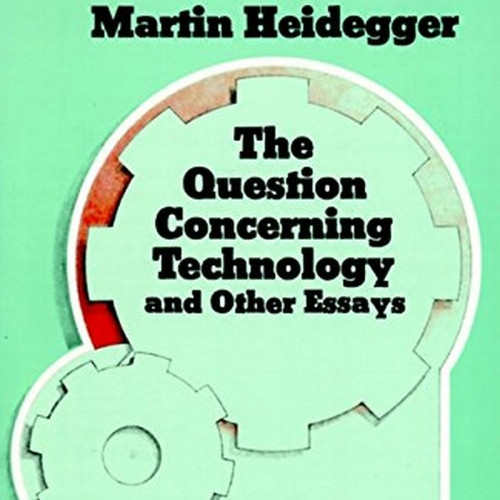 The Question Concerning Technology
The Question Concerning Technology
Heidegger is not a foe of technology and science. He neither disdains nor rejects them as though they were only destructive of human life. "In the development of this thought Heidegger has been taught chiefly by the Greeks, by German idealism, by phenomenology, and by the scholastic theological tradition. In him these and other elements have been fused by his genius of sensitivity and intellect into a very individual philosophical expression." - William Lovitt, from the Introduction.
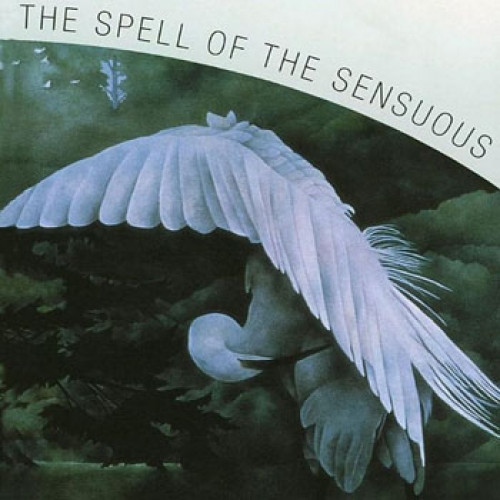 The Spell of the Sensuous
The Spell of the Sensuous
Abram draws on sources as diverse as the philosophy of Merleau-Ponty, Balinese shamanism, Apache storytelling, and his own experience as an accomplished magician to reveal the subtle dependence of human cognition on the natural environment. He explores the character of perception and excavates the sensual foundations of language, which, even at its most abstract, echoes nature.
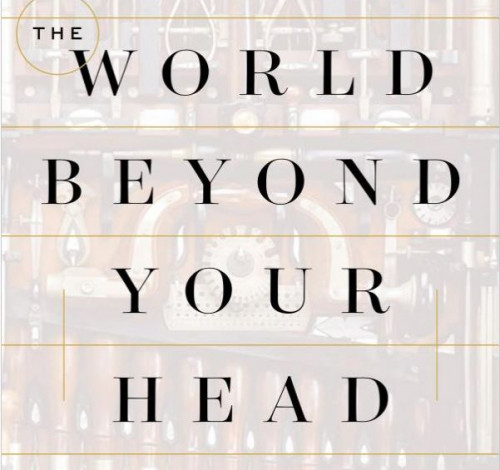 The World Beyond Your Head
The World Beyond Your Head
Crawford investigates the challenge of mastering one's own mind. We often feel beset by outside forces that destroy our focus and disrupt our peace of mind. Any defense against this requires that we reckon with the way attention sculpts the self. He shows our current crisis of attention becomes more comprehensible when understood as the coming to fruition of certain assumptions at the root of Western culture that are at odds with human nature.
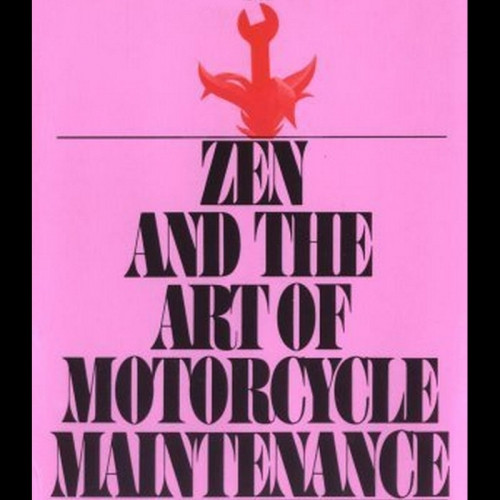 Zen and the Art of Motorcycle Maintenance
Zen and the Art of Motorcycle Maintenance
Pirsig introduces and explores philosophical questions in ways casual readers have found highly engaging. He attempts to create a practical philosophy and sets the book against the background of actual experience to make his thinking real for the reader. Probably no book has ever been more successful in interesting people in philosophy. I read it over 40 years ago when it was assigned reading for an architecture class - and several times since.